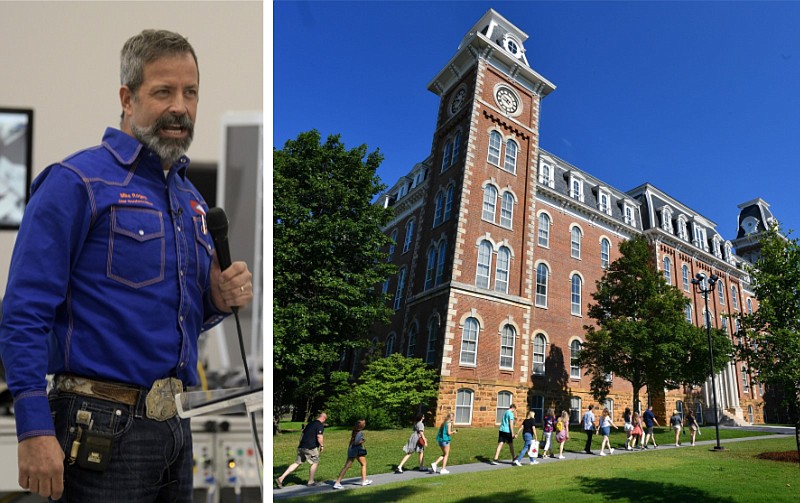MORRILTON -- Mike Rogers, Arkansas' chief workforce officer, has a plan to dramatically overhaul how individuals are pulled -- and retained -- in the state's workforce, and he believes the University of Arkansas System can be "the flagship to carry this banner" on the higher education side due to progress it's made illustrating professional pathways for current and potential students.
For example, the UA System is rolling out a common course numbering system that will, among other things, make transferring between UA System schools simpler for students. The numbering system "will go live" for the UA System's two-year institutions next year and for the four-year institutions and the University of Arkansas for Medical Sciences in 2025.
In addition, the UA System is working on a comprehensive student information system that will allow an individual to click on a prospective career -- for example, welder -- and immediately see everything from jobs available in that profession to salary ranges to what courses/credits/degrees/certifications, etc., are required for employment, and much more.
They can "truly see the return on investment" for pursuing various career paths through education, UA System President Donald Bobbitt, who plans to deliver a more detailed presentation to the UA board of trustees in September, explained earlier this summer. "It'll be awesome."
This is similar to the statewide portal Rogers desires so that anyone can see a path through education and into the workforce.
"We are laying rail close to what Mike is doing," Chris Thomason -- the UA System's vice president for Planning and Development -- said Tuesday. "I think [trustees] will be excited."
During the UA System trustees retreat at the Winthrop Rockefeller Institute on Petit Jean Mountain near Morrilton, Rogers said Tuesday he's focused on "pull workflow, [where] you create a passion and a spark to learn" in individuals. When that's been instilled, he said, "I'll jump through any hoop I have to [in order] to get that job [I want]."
"What's good about workforce [development] is we're talking about changing lives," said Rogers, who was appointed to his role by Gov. Sarah Huckabee Sanders earlier this year. "How do you break the cycle of poverty and recidivism in Arkansas? Through workforce."
Rogers is the state's first chief workforce officer, and he oversees a workforce cabinet created by the governor to advise her on how to best spend public dollars to train and educate Arkansans for their careers. The Governor's Workforce Cabinet was created through an executive order signed by Sanders, and career readiness is one component of her Arkansas LEARNS plan.
LEARNS stands for Literacy, Empowerment, Accountability, Readiness, Networking and Safety.
Rogers said he believes in a "digital wallet" that will demonstrate the skill set of a given individual and function as a learning and employment resume, because employers "don't care what you know."
"They care about what you can do," he said.
He wants to see more stackable degrees, certifications, and certificates, so individuals can make themselves more valuable to employers and take control of their work futures, he said. That can also appeal to the thousands of people who attended college but didn't complete a degree.
In Arkansas last year, the number of people with some college education but no credential increased by 4%, to roughly 300,000, Bobbitt said Wednesday. That's approximately 10% of the state's population.
"Job placement has to be prioritized," followed by "delta dollars, what you could have made versus what you're making now," he said. Finally, retention is paramount, and all three metrics -- job placement, delta dollars, and retention -- "are measurable."
Colleges and universities need to be "nimble, agile, and ready to pivot to what employers want," Rogers said. "I want to be a champion for the working men and women of the state."
Higher education institutions can also play a role in another of his priorities, getting more veterans and people who have been incarcerated into the state's workforce, he said. "There are barriers to employment, but some of those can be overcome."

